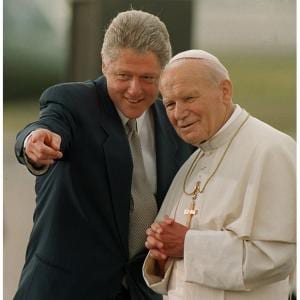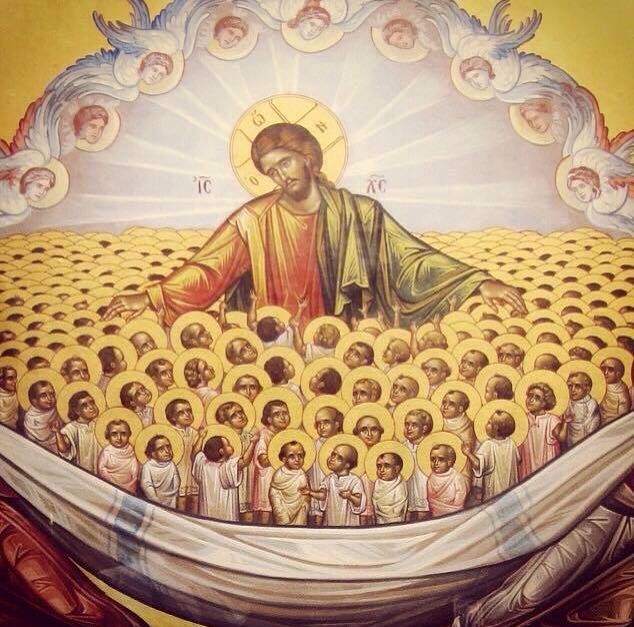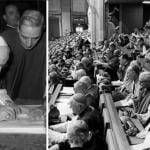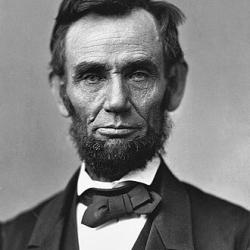The church is always changing and growing in the understanding of the deposit of faith handed on by Jesus to the apostles and then to all his successors. Each new generation of Catholics has to grapple with unchanging truth applied to their own time and place. Vatican 2 through the inspiration of the Holy Spirit took that guidance and helped craft documents that would help the modern church deal with the modern world.
While truth doesn’t change, times, situations, and circumstances do change. How we apply and live out the Catholic faith is not the same as it was 100, 1000 or even 2000 years ago. Our life is different and calls for a different approach and emphasis, while still practicing the same unchanging faith. The core of the faith never changes, only our understanding and application of it changes.
Here are some of the major happenings in Catholic thought and development since the Second Vatican Council. Some things Conservative Catholics will cheer and applaud. Some things Liberal Catholics will cheer and applaud. All legitimate Catholic thinking produced by our shepherds should be cheered and applauded. Coupled with theses thoughts in Catholic thinking are some important events that transpired around them. There are probably more writings and events that I could mention, but I feel that these are some of the most important teachings that have arisen since Vatican 2, but not the only ones. These are signs that the Holy Spirit is active and alive in Christ’s body the church.
The United States Conference of Catholic Bishops (USCCB) (1966)
In the world of comics, the Justice League of America was formed to bring together all the great DC super heroes in one collective so they could use their combined powers to overcome the forces of evil. After the council over in America all the active and retired bishops of the US and its territories, which include the U.S. Virgin Islands and Puerto Rico, form the The United States Conference of Catholic Bishops (USCCB) to help guide the church in the United States and to also fight the forces of evil and injustice by guiding American Catholics with the truth and light of the post Vatican 2 church. It was originally two separate entities who were united in one joint effort, The National Conference of Catholic Bishops (NCCB) and United States Catholic Conference (USCC). In July 2001 it ventured on a new odyssey and called it self the The USCCB. The US bishops will have an influence on American Catholics for the years to come, which you will see as you read on.
As of November 2019, the president is José Horacio Gómez, the archbishop of Los Angeles. The vice-president is Allen Henry Vigneron, archbishop of Detroit. It’s equivalent to Batman and Superman leading the Justice League.
Humanae Vitae (July 25, 1968) (Latin: Of Human Life)
The landmark (and to some controversial) encyclical from St. Pope Paul VI is released in 1968 upholding the church’s teaching regarding artificial Birth Control. It is balm to some and kryptonite to others. Humane Vitae comes at a time when the sexual revolution is in full swing illustrating that the Catholic Church will not lay down it’s arms in regards to her teaching on sexual morality.
This particular doctrine, often expounded by the magisterium of the Church, is based on the inseparable connection, established by God, which man on his own initiative may not break, between the unitive significance and the procreative significance which are both inherent to the marriage act.
The reason is that the fundamental nature of the marriage act, while uniting husband and wife in the closest intimacy, also renders them capable of generating new life—and this as a result of laws written into the actual nature of man and of woman. And if each of these essential qualities, the unitive and the procreative, is preserved, the use of marriage fully retains its sense of true mutual love and its ordination to the supreme responsibility of parenthood to which man is called. We believe that our contemporaries are particularly capable of seeing that this teaching is in harmony with human reason. (12)
The Society of Saint Pius X (SSPX or FSSPX) 1970
In the aftermath of the council the American bishops were not the only ones to form a new group of post Vatican 2 Catholics. Archbishop Marcel Lefebvre not happy with the changes in the Vatican 2 documents, even thou he signed the documents of Vatican 2 with his own hands, founds The Society of Saint Pius X in 1970. They ignore the new order of Mass and stick with the Tridentine rite, Latin and anything else taught before 1962.

See Archbishop Lefebvre signed every one of Vatican II’s documents (January 13, 2009 ) Catholic News Agency
Declaration on Procured Abortion (1974)
In the aftermath of Roe V. Wade in America the Sacred Congregation for the Doctrine of the Faith On November 18, 1974 issues the Declaration on Procured Abortion.
The problem of procured abortion and of its possible legal liberalization has become more or less everywhere the subject of impassioned discussions. These debates would be less grave were it not a question of human life, a primordial value, which must be protected and promoted. (1)
Divorced Catholics (1977)
Back in 1884 the Third Plenary Council of Baltimore received permission from the Holy See to impose an “automatic” excommunication on American Catholics who divorced and, without petitioning for and receiving a declaration of nullity (commonly called an annulment), remarried in a civil or other non-Catholic ceremony.
But on May 4, 1977– Divorced Catholic are no longer automatically excommunicated, including those who remarried outside the Church. Thanks to a rule by the little more then a decade old United States Conference of Catholic Bishops. The light and pastoral compassionate approach on divorced Catholics was not started with Pope Francis, so give him a break pharisees. Receiving communion is still outlawed if the previous marriages were not annulled by Church tribunals.
On November 11, 1977 Pope Paul VI ratified this decision and made it official for the whole church.
While Catholics are no longer excommunicated after civil divorce the church’s teaching on the indissolubility of valid marriage has not changed. The truth of marriage is still intact but the way the church deals with it has changed.
See Also … Were the Divorced Excommunicated? By Fr. Charles Grondin.
USCCB’s Pastoral Letter on Racism (1979)
This document penned in 1979 during the 2nd year of the reign of St. John Paul 2 is still rather relevant today in 2020 as we see the damage racism has done to this country.
Racism is a sin: a sin that divides the human family, blots out the image of God among specific members of that family, and violates the fundamental human dignity of those called to be children of the same Father. Racism is the sin that says some human beings are inherently superior and others essentially inferior because of races. It is the sin that makes racial characteristics the determining factor for the exercise of human rights. It mocks the words of Jesus: “Treat others the way you would have them treat you.” (4) Indeed, racism is more than a disregard for the words of Jesus; it is a denial of the truth of the dignity of each human being revealed by the mystery of the Incarnation.
See Should We All Be Racists Now Father? for a comical look at this serious subject.

Long before Fr. James Martin sought to council and not alienate the LGBT community, Courage International becomes an approved apostolate of the Catholic Church. It is a ministry that seeks to help out those with same sex attraction live out the churches teaching on sexuality and love, by encouraging these and men and women to lead chaste lives in fellowship, truth and charity.
Code of Cannon Law (1983)
There’s a new marshal in town and his name is St. John Paul 2. And he’s laying down the law. Canon Law. The 1983 Code of Canon Law promulgated by him replaces the 1917 Code of Canon Law, promulgated by Benedict XV on May 27th, 1917.
The Code of Canon Law provides an orderly presentation of law. Canons are individual paragraphs of set law that the Church interprets and applies to given situations. Though the Roman Catholic Church has had collections of laws for many centuries, the Code of Canon Law was issued first in 1917, revised in 1983, and will be revised again at some point in the future. The Eastern Catholic churches have their own code of law, which was issued in 1990.
The Church does not need a Code of Canon Law, but it has chosen to use such a structure. Canon law deals with the day-to-day affairs of the Church.
Pete Vere Ten Questions about Canon Law (February 1, 2005) Catholic.com
See also…
Apologetics and Canon Law 04/01/2006
First World Youth Day. (April- 14–15, 1984)
Believing that Catholic youth are extremely important to the church, St. PJP2 establishes a day entirely dedicated to them.
Just like the Avengers, May the YOUTH ASSEMBLE.
According to Wikipedia…
World Youth Day (WYD) is an event for young people organized by the Catholic Church.
World Youth Day was initiated by Pope John Paul II in 1985. Its concept has been influenced by the Light-Life Movement that has existed in Poland since the 1960s, where during summer camps Catholic young adults over 13 days of camp celebrated a “day of community”. For the first celebration of WYD in 1986, bishops were invited to schedule an annual youth event to be held every Palm Sunday in their dioceses. It is celebrated at the diocesan level annually, and at the international level every two to three years at different locations. The 1995 World Youth Day closing Mass in the Philippines set a world record for the largest number of people gathered for a single religious event with 5 million attendees— a record surpassed when 6 million attended a Mass celebrated by Pope Francis in the Philippines 20 years later in 2015
Priestly Fraternity of Saint Peter (1988)
The trend with new groups continues with the FSSP as a legitimate alternative to the SSPX.

According to Wikipedia…
The Priestly Fraternity of Saint Peter (Latin: Fraternitas Sacerdotalis Sancti Petri; FSSP) is a traditionalist Catholic society of apostolic life for priests and seminarians which is in communion with the Holy See.
The society was founded in 1988 under the leadership of 12 priests who were formerly members of the Society of Saint Pius X (SSPX), another traditionalist organization, but were unwilling to remain part of it following the Écône consecrations, which resulted in its bishops being excommunicated by the Holy See.
Headquartered in Switzerland, the society maintains two international seminaries: the International Seminary of St. Peter in Wigratzbad-Opfenbach, Bavaria, and Our Lady of Guadalupe Seminary in Denton, Nebraska, United States. The society is officially recognized by the Holy See and its priests celebrate the Tridentine Mass in locations in 124 worldwide dioceses.
Annus . (1991)
Pope John Paul 2 continues to crank out great contributions to the life of Catholic life, thought and practice as he issues the encyclical Centesimus annus. The writing deals with the hundredth anniversary of Rerum novarum, an encyclical issued by Pope Leo XIII in 1891. Rerum Novarum is considered a foundational text of modern Catholic social teaching. Many of the positions in Rerum novarum were supplemented by later encyclicals, in particular Pius XI’s Quadragesimo anno (1931) and John XXIII’s Mater et magistra (1961).
Today, at a distance of a hundred years, the validity of this approach affords me the opportunity to contribute to the development of Christian social doctrine. The “new evangelization”, which the modern world urgently needs and which I have emphasized many times, must include among its essential elements a proclamation of the Church’s social doctrine. As in the days of Pope Leo XIII, this doctrine is still suitable for indicating the right way to respond to the great challenges of today, when ideologies are being increasingly discredited. Now, as then, we need to repeat that there can be no genuine solution of the “social question” apart from the Gospel, and that the “new things” can find in the Gospel the context for their correct understanding and the proper moral perspective for judgment on them. (5)
New Catechism of the Catholic Church (1992)
This catechism aims at presenting an organic synthesis of the essential and fundamental contents of Catholic doctrine, as regards both faith and morals, in the light of the Second Vatican Council and the whole of the Church’s Tradition. Its principal sources are the Sacred Scriptures, the Fathers of the Church, the liturgy, and the Church’s Magisterium. It is intended to serve “as a point of reference for the catechisms or compendia that are composed in the various countries.”
This work is intended primarily for those responsible for catechesis: first of all the bishops, as teachers of the faith and pastors of the Church. It is offered to them as an instrument in fulfilling their responsibility of teaching the People of God. Through the bishops, it is addressed to redactors of catechisms, to priests, and to catechists. It will also be useful reading for all other Christian faithful (11-12).
Jon, Sorensen, Is the Catechism “Extra Stuff”? (November 25, 2013) Catholic.com
First World Youth Day in America (1993)
World Youth Day extends it’s horizons and comes to America during the reign of President Clinton.

Date: August 10, 1993 – August 15, 1993
Location: Denver, Colorado, United States
Theme: I came that they might have life, and have it to the full (Jn 10:10)
It was a colossal undertaking that exhausted everyone involved in it (except, perhaps, for the ebullient John Paul II), and it succeeded far beyond anyone’s expectations (except, again, for the pope’s). The event itself was a marvel. The helicopter pilot who flew John Paul into the old Mile High Stadium said the noise from the cheering crowd created air turbulence the likes of which he hadn’t experienced since being under fire when flying in Vietnam. The chief of police later noted that there hadn’t been a single felony arrest in the city during the entire time World Youth Day was underway—right after Denver had been experiencing a serious crime wave. Skeptical people who hadn’t seen the inside of a church in years found themselves giving water and candy to young pilgrims as they walked fifteen miles through and out of the city they’d transformed, to the closing Vigil and Mass at Cherry Creek State Park.
George Weigel WYD-1993: THE TURNING POINT (August 8, 2018) First Things
Priestly ordination (1994)
The post Vatican 2 church is often accused of being an epicenter of modernism, but on May 22, 1994 – St. Pope John Paul II issues the Apostolic Letter Ordinatio sacerdotalis from the Vatican, expounding the Catholic Church’s position requiring “the reservation of priestly ordination to men alone”.
When the question of the ordination of women arose in the Anglican Communion, Pope Paul VI, out of fidelity to his office of safeguarding the Apostolic Tradition, and also with a view to removing a new obstacle placed in the way of Christian unity, reminded Anglicans of the position of the Catholic Church: “She holds that it is not admissible to ordain women to the priesthood, for very fundamental reasons. These reasons include: the example recorded in the Sacred Scriptures of Christ choosing his Apostles only from among men; the constant practice of the Church, which has imitated Christ in choosing only men; and her living teaching authority which has consistently held that the exclusion of women from the priesthood is in accordance with God’s plan for his Church.” (1)
Letter to Women (1995)
After establishing a day for youth and finalizing that only men can be priests , on June 29, 1995, St. John Paul II issues his Letter to Women citing the Feminine Genius.
The Church sees in Mary the highest expression of the “feminine genius” and she finds in her a source of constant inspiration. Mary called herself the “handmaid of the Lord” (Lk 1:38). Through obedience to the Word of God she accepted her lofty yet not easy vocation as wife and mother in the family of Nazareth. Putting herself at God’s service, she also put herself at the service of others: a service of love. Precisely through this service Mary was able to experience in her life a mysterious, but authentic “reign”. It is not by chance that she is invoked as “Queen of heaven and earth”. The entire community of believers thus invokes her; many nations and peoples call upon her as their “Queen”. For her, “to reign” is to serve! Her service is “to reign”! (10)
Evangelium Vitae (1995)
John Paul II writes Evangelium Vitae where he first states in clear precise language the church’s opposition to capital punishment. This did not start with Pope Francis.
Moreover, “legitimate defence can be not only a right but a grave duty for someone responsible for another’s life, the common good of the family or of the State”.44 Unfortunately it happens that the need to render the aggressor incapable of causing harm sometimes involves taking his life. In this case, the fatal outcome is attributable to the aggressor whose action brought it about, even though he may not be morally responsible because of a lack of the use of reason. 45
This is the context in which to place the problem of the death penalty. On this matter there is a growing tendency, both in the Church and in civil society, to demand that it be applied in a very limited way or even that it be abolished completely. The problem must be viewed in the context of a system of penal justice ever more in line with human dignity and thus, in the end, with God’s plan for man and society. (56)
The Joint Declaration on the Doctrine of Justification (JDDJ) (1999)
According to Wikipedia…
The Joint Declaration on the Doctrine of Justification (JDDJ) is a document created and agreed to by the Catholic Church’s Pontifical Council for Promoting Christian Unity (PCPCU) and the Lutheran World Federation in 1999 as a result of extensive ecumenical dialogue. It states that the churches now share “a common understanding of our justification by God’s grace through faith in Christ.” To the parties involved, this essentially resolves the 500-year-old conflict over the nature of justification which was at the root of the Protestant Reformation. The World Methodist Council adopted the Declaration on 18 July 2006. The World Communion of Reformed Churches (representing the “80 million members of Congregational, Presbyterian, Reformed, United, Uniting, and Waldensian churches”), adopted the Declaration in 2017
Canonization of Faustina Kowalska (2000)
On April 30, 2000, Faustina Kowalska is canonized a saint. She is a nun who had mystic visions of Christ in the 1930’s which resulted in the Divine Mercy devotion. She lived in Poland at the same time as St. Pope John Paul 2 and St. Maximilian Kolbe. It was on the day of her canonization that Divine Mercy Sunday was established as a feast day to be celebrated on the Sunday after Easter. 
The Rosary of the Virgin Mary ,(2002)
In October 2002, Pope John Paul II’s Apostolic Letter, Rosarium Virginis Mariae, introduced the Luminous Mysteries of the Rosary to the world. It’s important to note that the church is always giving us new ways to pray and connect with the Lord Jesus with such things as new mysteries to pray and days like Divine Mercy to celebrate. With the trouble about to spring up in the church, we need all the prayers we can get.
Ministry to Persons with a Homosexual Inclination (2006)
On November 14, 2006, Ministry to Persons with a Homosexual Inclination is a document which was issued on 2006 by the United States Conference of Catholic Bishops during the reign of Pope Benedict XI. It details guidelines on religious ministry to homosexual people which is exampled by groups like Courage International.
While the Church teaches that homosexual acts are immoral, she does distinguish between engaging in homosexual acts and having a homosexual inclination. While the former is always objectively sinful, the latter is not. To the extent that a homosexual tendency or inclination is not subject to one’s free will, one is not morally culpable for that tendency. Although one would be morally culpable if one were voluntarily to entertain homosexual temptations or to choose to act on them, simply having the tendency is not a sin. Consequently, the Church does not teach that the experience of homosexual attraction is in itself sinful.
Summorum Pontificum (2007)
On July, 2007 B16 sends out a love letter to Traditionalist Catholics. Summorum Pontificum (English: “Of the Supreme Pontiffs”) is the apostolic letter of which gives priests permission to say the traditional Latin mass. It is also the form known as the Tridentine Mass or Traditional Latin Mass.
The Roman Missal promulgated by Paul VI is to be regarded as the ordinary expression of the law of prayer (“lex orandi”) of the Catholic Church of Latin rite, while the Roman Missal promulgated by St. Pius V and published again by Blessed John XXIII as the extraordinary expression of the law of prayer (“lex orandi”) and on account of its venerable and ancient use let it enjoy due honor. These two expressions of the law of prayer (“lex orandi”) of the church in no way lead to a division in the law of prayer (“lex orandi”) of the church, for they are two uses of the one Roman rite.
See Commentary on the Popes – Jimmy Akin
Limbo (2007)
The Hope of Salvation for Infants Who Die Without Being Baptized is published by the International Theological Commission. This concerns the Catholic doctrine of limbo.
“The Hope of Salvation” in fact reiterates and builds upon the Catholic tradition. It neither categorically rejects Limbo nor denies the necessity of baptism. Rather, it offers reasons to hope that God may provide a way of salvation to those little ones whose lives ended before baptism was possible.
Matthew A.C. Newsome, Let the Children Come to Me (October 1, 2007) Catholic.com
Misericordia et misera (2016)
At the end of the Extraordinary Jubilee of Mercy which ran from December 8, 2015, the Feast of the Immaculate Conception, to November 20, 2016, the Feast of Christ the King, Pope Francis published the apostolic letter Misericordia et misera. In this letter Pope Francis does two important things.
First he gives ordinary priests like Fr. Dwight Longenecker, Fr. Casey Cole and Fr. Matthew P. Schneider LC the ability to forgive the sin of abortion, which before could only be forgiven by a bishop.
I henceforth grant to all priests, in virtue of their ministry, the faculty to absolve those who have committed the sin of procured abortion. The provision I had made in this regard, limited to the duration of the Extraordinary Holy Year, is hereby extended, notwithstanding anything to the contrary. I wish to restate as firmly as I can that abortion is a grave sin, since it puts an end to an innocent life. In the same way, however, I can and must state that there is no sin that God’s mercy cannot reach and wipe away when it finds a repentant heart seeking to be reconciled with the Father. May every priest, therefore, be a guide, support and comfort to penitents on this journey of special reconciliation. (12)
For those of you who think Pope Francis is soft on abortion he clearly states here that it is a GRAVE SIN.
He also throws out a gesture of peace to the schismatic Catholic group the SSPX.
For the Jubilee Year I had also granted that those faithful who, for various reasons, attend churches officiated by the priests of the Priestly Fraternity of Saint Pius X, can validly and licitly receive the sacramental absolution of their sins. For the pastoral benefit of these faithful, and trusting in the good will of their priests to strive with God’s help for the recovery of full communion in the Catholic Church, I have personally decided to extend this faculty beyond the Jubilee Year, until further provisions are made, lest anyone ever be deprived of the sacramental sign of reconciliation through the Church’s pardon. (12)
Next time someone talks smack about how awful this pope is and that he is the worst in history, please remember this apostolic letter.
Catechism Change on Death Penalty (2018)
On August 2, 2018, Pope Francis continues bestowing God’s mercy on the faithful. The Catechism of the Catholic Church is revised to state that the Church teaches that “the death penalty is inadmissible because it is an attack on the inviolability and dignity of the person.
The revision notes that “a new understanding has emerged of the significance of penal sanctions imposed by the state.” This refers to the fact that in the past the state’s penal sanctions were understood principally as administering justice (including divine justice) to wrongdoers, but today the Church understands them principally as seeking to protect society and (hopefully) rehabilitate the offender (see Ladaria 7 and the changes made to paragraph 2266 in the Catechism).
Jimmy Akin, Understanding the Catechism Revision on the Death Penalty 2018 (August 8, 2018) Catholic.com
Forming Consciences for Faithful Citizenship (2019)
This is an updated version of the Faithful Citizenship guide first published in 2007 and then another version was approved in 2015 and published in 2016. Much to the surprise of some Catholics, our church does not tell us who to vote for.
In this statement, we bishops do not intend to tell Catholics for whom or against whom to vote. Our purpose is to help Catholics form their consciences in accordance with God’s truth. We recognize that the responsibility to make choices in political life rests with each individual in light of a properly formed conscience, and that participation goes well beyond casting a vote in a particular election.
Pope Francis elaborates on forming consciences.
As the bishops of the United States of America have rightly pointed out, while the Church insists on the existence of objective moral norms which are valid for everyone, “there are those in our culture who portray this teaching as unjust, that is, as opposed to basic human rights. Such claims usually follow from a form of moral relativism that is joined, not without inconsistency, to a belief in the absolute rights of individuals. In this view, the Church is perceived as promoting a particular prejudice and as interfering with individual freedom” (USCCB, Ministry to Persons with a Homosexual Inclination (2006), 17). We are living in an information-driven society which bombards us indiscriminately with data-all treated as being of equal importance-and which leads to remarkable superficiality in the area of moral discernment. In response, we need to provide an education which teaches critical thinking and encourages the development of mature moral values.
Pope Francis, Evangelii Gaudium (no. 64)
And…
The permanent principles of the Church’s social doctrine constitute the very heart of Catholic social teaching. These are the principles of: the dignity of the human person, . . . the common good; subsidiarity; and solidarity. These principles [are] the expression of the whole truth about man known by reason and faith . . .”
-Compendium of the Social Doctrine of the Church (no. 160)
The Church’s Best-Kept Secret: A Primer on Catholic Social Teaching Paperback (2020)
Catholic author Mark Shea publishes his book on Catholic Social Teaching summonsing what the official teaching of the church is on the issue.
What the Church teaches about how to love our neighbor comes to us through two millennia of apostles, prophets, evangelists, pastors, teachers, saints, philosophers, thinkers, and reformers pondering the implications of Jesus’ teaching and, what is more, living it out.
I propose that, for the duration of this little primer, we set aside all those clamoring voices in our culture, choose to listen to the Church’s Tradition, and see how the liberating gospel of Jesus Christ, articulated by the Magisterium—that is, the bishops of the Church in union with the Pope stretching back to the apostles—speaks the truth that sets us free.
In Conclusion
As the church lives on in the world, it will continue to grow and articulate the faith in new and exciting ways. These are just some of those ways that have happen over the last 55 years since the end of the 2nd Vatican council. It will be interesting to see what the Holy Spirit does next.















